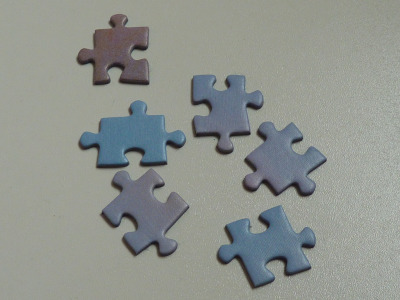Relax! Speed Puzzling Breathing Techniques will help your speed puzzle time and you’ll feel better too. Surrounding in a room full of puzzle enthusiasts, I would have never thought about my breathing, except the competition is real! At the first jigsaw speed puzzle competition I went to, I was a newbie and green. Everything seemed load and my head spinning. Honestly, I think I forgot to breath as I was so excited and a little big nervous. I’m not alone as I’ve talked to other players who feel the same way.

Speed Puzzling Breathing Techniques Help
Speed puzzling participants often recognize the significance of controlled breathing techniques as a tool to manage stress, enhance concentration, and optimize performance during competitions. It’s not part of the physical game, but it’s definitely an emotional and mental tool you can use to better your game. This isn’t some weird tip that sounds good, it does help you with your game play.
Table of Contents
The Need to Breathe
Do you need Speed Puzzling Breathing Techniques? Yes, and let me tell you why. Whether it is your first time or your 50th, the way you take a breath will help how you play. In fact, you might be surprised to learn that if you practice your technique of breathing, your game will be in focus for the whole event.
10 Speed Puzzling Breathing Techniques to Use During Practice
Here are 10 speed puzzling strategies to better your game and help you focus on the jigsaw puzzle you want to complete:
1. Pre-Competition Relaxation.
Deep Breaths for Calmness: Before the competition begins, speed puzzling competitors engage in deep breathing exercises to induce a state of calmness and focus. Controlled inhales and exhales help regulate the nervous system, preparing them for the mental demands of the competition.
2. In-the-Moment Centering.
Focused Breathing During Speed Puzzling: While actively solving the puzzle, speed puzzling players incorporate focused breathing to stay centered and composed. Taking intentional breaths between connecting pieces allows for brief moments of mental reset and helps prevent anxiety or overwhelm.
3. Combatting Stressful Moments.
Quick Breathing Breaks help keep the pace. During challenging moments or when facing time pressure, speed puzzling gamers may pause briefly to take a few quick and intentional breaths. This helps release tension, clear the mind, and create a brief buffer against stress.
4. Rhythm Coordination.
Syncing Breath with Movements helps overcome emotions. Some speed puzzlers coordinate their breathing with specific puzzle-solving movements. For example, taking a deep breath before rotating the puzzle or inhaling during the search for pieces. This rhythmic coordination enhances focus and creates a seamless flow.
5. Post-Completion Recovery.
Recovery Breaths help you calm down. After completing the puzzle or achieving a milestone, speed puzzling participants use breathing techniques to aid recovery. Deep, slow breaths help regulate heart rate and bring the body back to a calm state, preparing for potential follow-up rounds or tasks.
6. Mindful Awareness.
Mindful Breathing really does being awareness. Speed puzzlers cultivate mindful awareness of their breath throughout the competition. By staying attuned to their breath, they can promptly notice signs of tension or distraction, allowing them to address and alleviate potential issues before they impact performance.
7. Adaptation to Puzzle Complexity.
Varied Breathing for Varied Challenges offers stabilization. Speed puzzling solvers adapt their breathing techniques to the complexity of the puzzle. During intricate sections, they may opt for slower, more controlled breaths to enhance precision, while faster breaths can maintain momentum during less challenging phases.
8. Consistency in Practice.
Routine Incorporation of Speed Puzzling Breathing Techniques brings focus. Successful speed puzzlers integrate breathing techniques into their regular practice sessions. Consistent incorporation builds a familiarity that allows them to seamlessly apply these techniques and other speed puzzling tips during competitions, ensuring they become second nature.
9. Visualization and Breathing.
Integration for Mental Preparation is easy. Speed puzzling competitors often combine visualization with controlled breathing. Before competitions, they visualize successful puzzle-solving scenarios while using deep breathing to create a positive and focused mental state.
10. Team Coordination.
Shared Rhythms and focus brings uniform result. In team competitions, speed puzzling participants synchronize their breathing patterns with their teammates. This shared rhythm fosters a sense of cohesion and teamwork, enhancing overall performance.
In my opinion, if you are open to trying to get your best times, you might want to step away from the jigsaw puzzle and think about how you are playing the game. Sometimes it’s not the jigsaw pieces that trip you up, it’s your form or mindset. Speed Puzzling Breathing Techniques do help and I use them in my play today.
Watch Your Breathing; Increase Your Skill
By embracing breathing techniques, speed puzzling e leverage a powerful and accessible tool for maintaining composure, managing stress, and optimizing their cognitive and physical capabilities during competitions.
